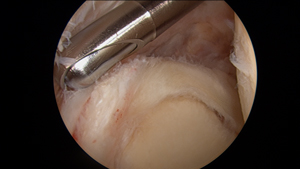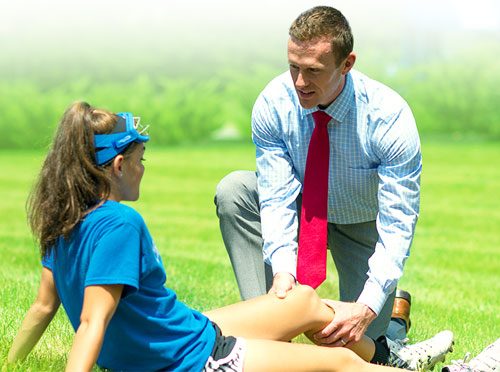Dr. Rice has joined Beacon Orthopedics and Sports Medicine
Congratulations Dr. Rice: 2024 Cincinnati Magazine Top Doctor
Biceps Tendonitis
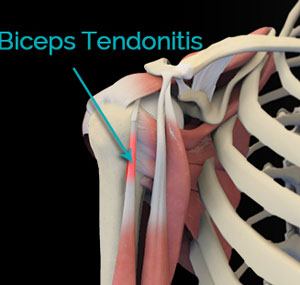
Bicipital tendonitis is the inflammation of the biceps tendon, the tissue that connects the biceps muscle in your upper arm to the bones in the shoulder joint, allowing you to bend and rotate your arm. The condition causes pain in the upper arm and shoulder. It is more common in men in the age group of 40 to 60 years and occurs due to overuse of the arm and shoulder during many sports activities like tennis, baseball, weightlifting and kayaking where overhead movement is involved. It may also be associated with rotator cuff tears, arthritis or injury.
What are the symptoms of bicipital tendonitis?
Bicipital tendonitis is characterized by pain in the shoulder which may travel to the upper arm, swelling, tenderness, reduced shoulder movement and a bulge in the biceps if the tendon ruptures.
How is this condition diagnosed?
On presenting with shoulder pain, your doctor will conduct a thorough examination of your shoulder to identify the site of inflammation and the movements that cause pain. X-rays and MRI scan may be suggested to confirm the diagnosis.
What are the treatment options?
First line treatment options include rest, ice and non-steroidal anti-inflammatory drugs (NSAIDs) to bring down the inflammation and pain, direct injection of steroid into the affected arm and physical therapy.
If conservative treatment does not give relief, surgery is performed. Through surgery, the long head of the tendon can be released (biceps tenotomy), or the tendon can be cut and reattached lower down the arm (biceps tenodesis).
Bicipital tendonitis can be prevented by modifying overhead hand activities with guidance from a physiotherapist.
Case Example #1
45yo male weightlifter with several months of anterior shoulder pain, unable to perform chest, shoulder, and arm exercises at gym for nearly 2 months. MRI revealed extensive biceps tendonitis and tearing. Patient failed nonsurgical treatment and elected for shoulder arthroscopy
Intraarticular biceps tendon at its attachment to superior glenoid labrum with extensive complex tearing; biceps tendon located at 12 o'clock on photo #2
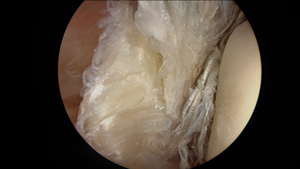
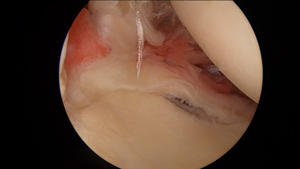
Arthroscopic shaver device to debride biceps tendon and release to perform subpectoral biceps tenodesis procedure
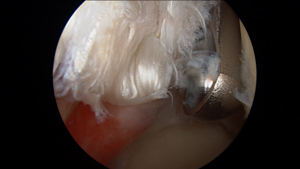
Biceps release and labral debridement complete with tension relieved on superior labrum. Diseased biceps tendon was resected and remainder of proximal tendon was reattached to humerus with open biceps tenodesis procedure
